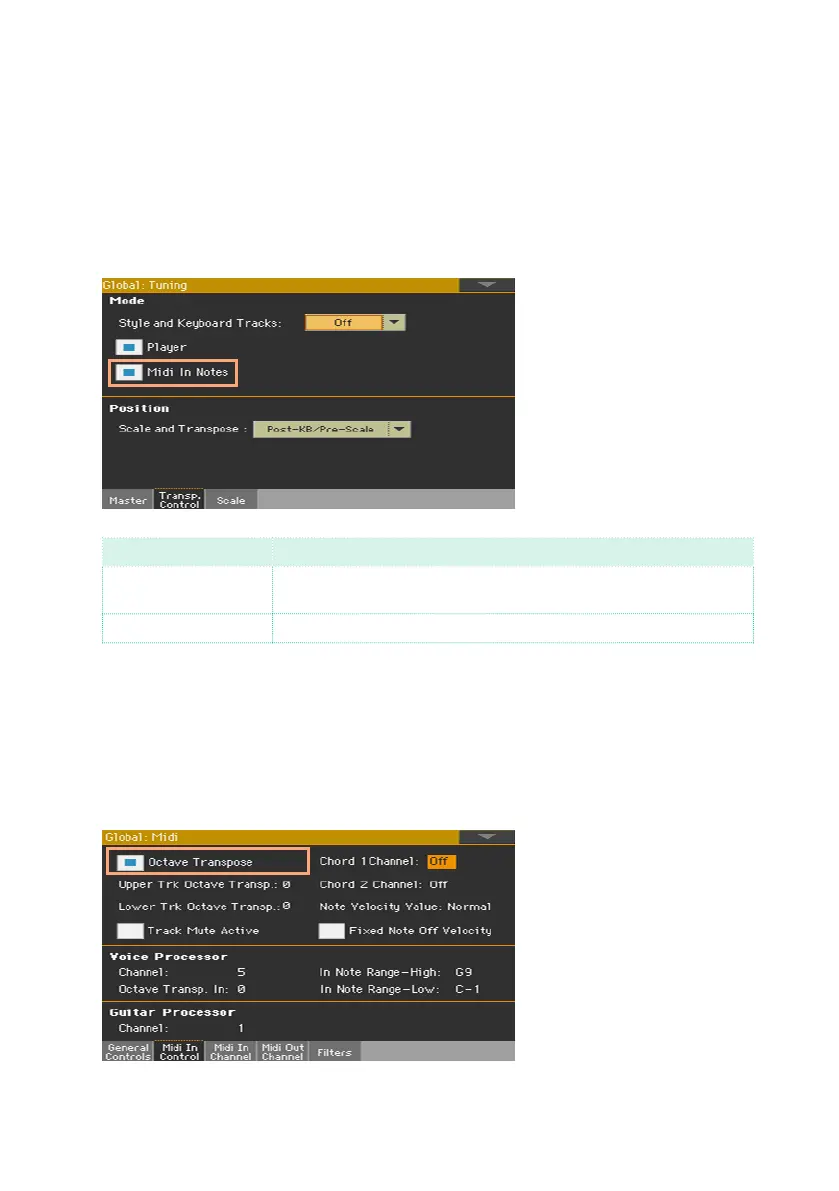880| MIDI
Transposing the notes received
Applying master and octave transposition to the notes received
1 Go to the Global > Tuning > Transpose Control page.
2 Use the Mode > Midi In Notes checkbox to determine if notes received on the
MIDI IN and USB ports have to be transposed.
Midi In Transpose Meaning
On Notes received on the MIDI IN and USB ports are transposed accord-
ing to the Master Transpose.
Off Data received on the MIDI IN and USB ports are not transposed.
Applying octave transposition to the notes received
1 Go to the Global > MIDI > MIDI IN Controls page.
2 Use the Midi In Octave Transpose checkbox to determine if notes received
on the MIDI IN and USB ports have to be octave-transposed.

